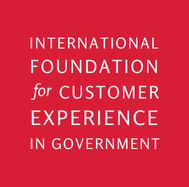2025
In this special edition of the GovCX Journal, Setal Morzaria, Associate Director of Digital Products and Services at the City of Vancouver, shares with us her vision and leadership contributions in advancing human-centric approaches in the public sector.
How It All Started
What if the frustration people feel when using services isn’t about a lack of effort from the public sector, but about how the services are designed?
That’s what Setal observed while navigating public services, which inspired her to help build the foundation for sustainable change, ensuring that efforts are not wasted but effectively directed. “My motivation stems from both lived experience and professional insight.” She says.
It wasn’t that people weren’t trying to help — Setal saw that the problem was deeper.
“Services can often be frustrating, not due to a lack of effort, but because they’re typically designed around internal structures rather than the needs of the people they serve.”
Setal wanted to understand the system beneath. For her, it wasn’t enough to only fix what was visible.
“I realized that too often, well-intentioned improvements addressed symptoms rather than root causes. I didn’t want to just fix surface-level pain points — I wanted to take a systems view of the entire service ecosystem.”
Afterwards, this systems view became central to her leadership style, that meant understanding how processes, data, and people intersect to shape customer and employee experiences, and identifying the structural gaps, operational challenges, and opportunities for transformation.
Setal led the development of her organization’s initial Customer Experience (CX) strategy, where she advocated for setting a clear strategy, as without it, efforts would remain fragmented and reactive:
What Gets in the Way?
When discussing key challenges in public sector CX, Setal points first to service complexity:
“When internal delivery structures don’t align with how people experience services in real life, this creates friction and fragmentation, and makes it difficult to design or measure services from end to end.”
She also noted that getting every concerned department on board to drive transformation requires both cultural and operational change, despite the growing awareness of CX concepts. Setal suggests that to overcome these challenges, entities need
“to build CX capability across the organization. This includes establishing shared standards, forming multidisciplinary teams, and providing tools and frameworks that support human-centered, data-informed decision-making.”
Building services in silos is another challenge that Setal notes. It often results in disjointed customer experiences that feel disconnected from their actual needs:
“Service integration is also essential: connecting digital, operational, and policy layers so that services feel seamless and coherent to the people using them.”
A Vision for the Future of CX
When asked how she envisions the future for GOVCX, Setal’s responses remained connected to core CX principles, highlighting that CX thinking is not just important to today’s challenges, but essential for shaping the future.
“I see public sector CX becoming more proactive, personalized, and integrated. Rather than expecting people to navigate siloed structures, services will be designed around life events and real-world contexts, becoming simpler, faster, and more relevant.”
Setal also acknowledges that empowering teams is essential to maintain the delivery of services as she noted: “There will also be a growing focus on the employee experience, recognizing that empowered staff are key to delivering great service.”
The future, as Setal envisions it, is one where customers have a stronger voice in shaping the services they experience:
“Most importantly, there will be more greater public participation. Through co-design, participatory research, and inclusive feedback loops, people will have more opportunities to shape the services they depend on — not just after implementation, but throughout the design and delivery process.”
Advice for the Next Generation of CX Leaders
For those emerging in the field, Setal offers practical advice based on her years of experience:
“Be curious, collaborative, and purpose-driven. This work sits at the intersection of complexity and impact, and it calls for systems thinking, humility, and a learning mindset. Knowing how policy, operations, technology, and human behavior interact will help you make meaningful contributions across disciplines.”
She also emphasizes the importance of community and the value of incremental change for future leaders.
In closing, Setal notes that she has been leading with one of the core principles of CX: empathy.
“Above all, lead with empathy. CX is about understanding real human experiences and ensuring systems are designed to support them.”

